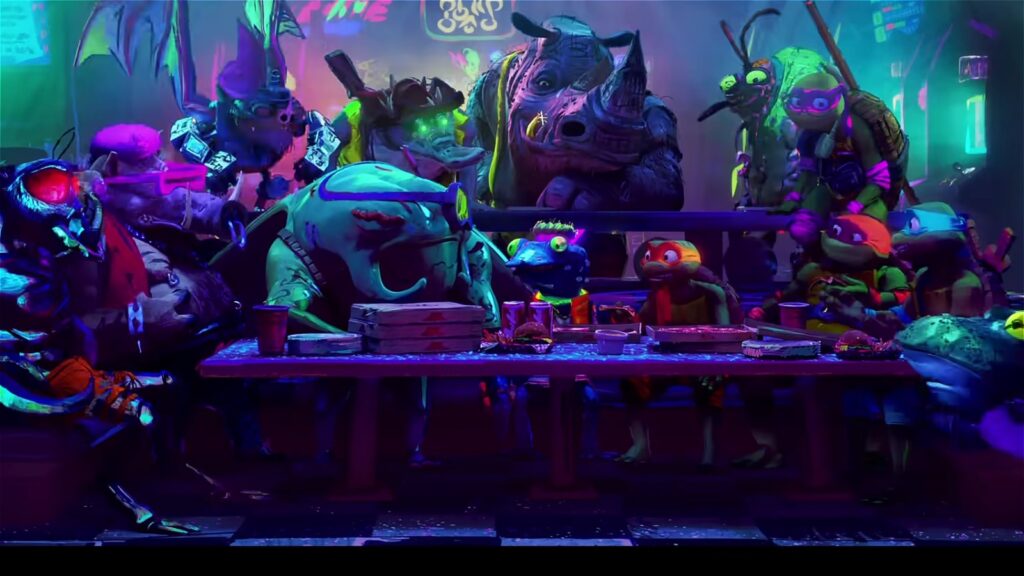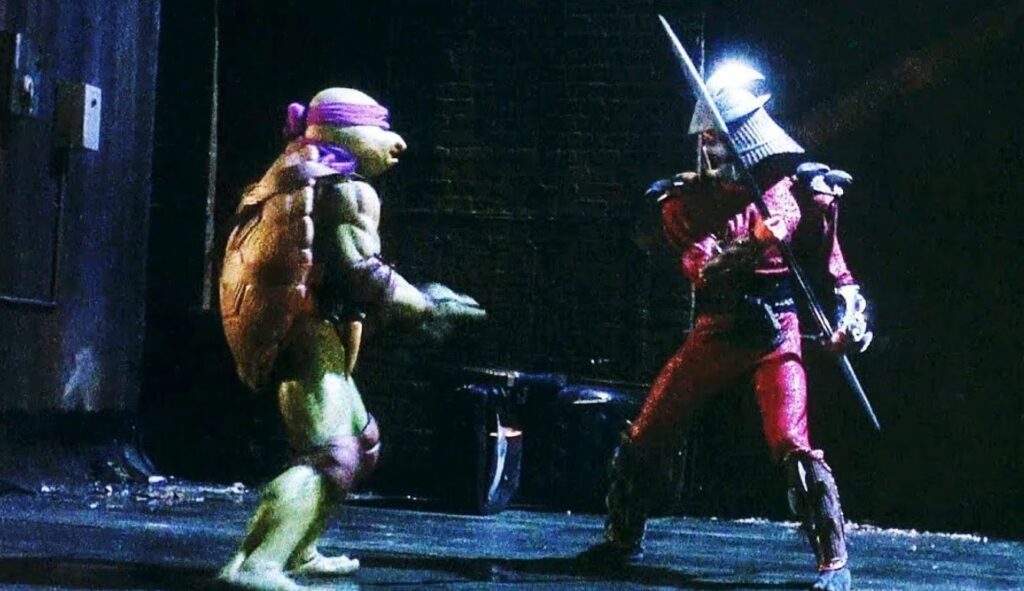How the Ninja Turtles Mutated from Sewer Creatures to Superstars

Issue Two: Out of the Shadows
Edited by Francisco Viana
Comic book artists Kevin Eastman and Peter Laird could hardly believe what they were hearing on the other end of their landline. Having conceptualized the Teenage Mutant Ninja Turtles just four years prior, Eastman and Laird never anticipated being invited to produce their own line of action figures. And yet, Playmates Toys was willing to pitch the impossible.
The turtles had already captured the hearts of a feverish cult following, inspiring countless parodies such as the “Adolescent Radioactive Black Belt Hamsters,” the “Mildly Microwaved Pre-Pubescent Kung-Fu Gophers,” and the “Pre-Teen Dirty-Gene Kung-Fu Kangaroos” all of which published in 1986. However, Playmates worried that the TMNT franchise had yet to establish enough of a mainstream audience to be profitable.
Their solution was to create a five-part animated miniseries chronicling the adventures of the turtles in New York City. This process involved a dramatic rebranding for TMNT that would establish the public image that has endured for nearly forty years.
“TMNT” (1987) departed from the source material in two important ways. First, the miniseries had to take a much sillier approach to the turtles’ antics. To sell action figures, plushies, and breakfast cereals, they had to be kid-friendly, unlike their grittier grayscale Mirage counterparts. The original comics were bloody, laden with swear words, and were written with no intention of the franchise gaining traction among young readers.

Next, the turtles had to be more easily identifiable if they were to become profitable. On the cover pages of the Mirage comics, which were the only colored sections, all four turtles were depicted with red bandanas. The only way to differentiate them was based upon their weapon of choice. Playmates’ definitive change to combat this problem was the addition of multicolored bandanas, which established a stronger sense of selfhood and greater merchandising potential for each turtle. It turned out to be a good idea, considering the line’s success—selling over $1 billion worth of merchandise in just under ten years.
“I think it says a lot that the creators seemed to embrace the multicolored bandanas pretty quickly and that they’ve stayed since they were introduced,” says Ralph Attanasia, a multimedia artist, former art teacher, and lifelong turtles fan. “It goes a long way in helping to define them as individuals and tell individual stories.”
In 1988, Archie Comics began publishing “Teenage Mutant Ninja Turtles Adventures,” a 72-issue series that started out by adapting storylines from “TMNT” (1987). After a few issues, Eastman and Laird handed the series off to other writers from Mirage Studios. Unlike the original comic run, “TMNT Adventures” targeted a younger audience. The Archie run introduced several new mutant characters, including a spin-off series about the Mighty Mutanimals, who would eventually return as the main antagonists of 2023’s “Mutant Mayhem.”

“The Archie comics are where they really transitioned from the dark, gritty New York superheroes to the super cartoonish, cute heroes that had better marketability,” says comic retailer Bill Cody. “They always had an adult demographic because they were meant to be a satire of other superheroes. All of a sudden, you had this weird split of adults buying them for one reason and kids buying them for another.”
The overlapping releases of the first “TMNT” TV show and the goofier Archie comics cemented the turtles as a fan favorite for young readers everywhere. Playmates’ creative team worked on writing, editing, and producing the show to ensure that they could iconize certain visuals and catchphrases within the franchise, such as “Cowabunga” and “Booyakasha.”
“As soon as the cartoon debuted in December 1987, TMNT belonged to kids,” says Andrew Farago, curator of the Museum of Cartoon Art and author of “Teenage Mutant Ninja Turtles: The Ultimate Visual History.” “The comic book had established a strong following by that point, but the audience for the cartoons—then the toys, the video games, and the movies—was exponentially larger than that.”
Playmates also introduced recurring characters to expand the action figure line, such as Bebop and Rocksteady, a supervillain tag team of a mutant warthog and rhinoceros that work under the evil Foot Clan. Attanasia and Farago both cite “TMNT” (1987) as being the property that sparked their childhood interest in the franchise.
“Ever since I was little, I’ve always liked reptiles, dinosaurs, monsters and creatures,” Attanasia says. “So when you had this set of heroes who looked like the creatures I liked, who were usually villains, that made me really excited. I think it’s very special for kids to have heroes who are cool and weird and who don’t belong because most kids feel the same way.”
In 1990, the turtles hit the silver screen for the first time. The live-action film adaptation “Teenage Mutant Ninja Turtles” premiered in theaters worldwide, breaking the record for the highest grossing independent film to date. It featured life-size 70-pound puppets from Jim Henson’s Creature Shop and a cameo of Eastman working as a NYC garbage man. “TMNT” (1990) was firmly established in New York City. The production team stacked the soundtrack with hip hop and R&B artists that were popular in and around NYC. M.C. Hammer and Johnny Kemp were two of the biggest draws, with their names featured in their own bubble on the film poster.

“TMNT” (1990) was an important installment in the franchise for a number of reasons—it set the stage for future iterations of the turtles to embrace nuanced characters and plot lines. The turtles were no longer just a Marvel parody; the Creature Shop breathed new life into them. Perhaps the most notable feat of “TMNT” was its solidification of the turtles’ characterizations. Two subsequent sequels drove home these ideas even further. These characters shifted away from representing their Mirage selves. Instead, they translated their cartoony 1987 counterparts into live action.
The transition is most obvious with the character April O’Neil. She is a multi-skilled ally, aiding the turtles in a variety of roles such as a computer programmer, a journalist and a scientist. Though her print origins are murky (Eastman and Laird often contradict each other when asked what inspired April’s design), it’s agreed upon that she was based on Eastman’s ex-wife, April Fisher. In her original Mirage appearance, April’s design elements included thick, curly black hair and a shaded skin tone made ambiguous by the comic’s lack of color. But starting with the 1987 cartoon, she was reimagined as a pale-skinned woman with red hair, a depiction that would stick throughout the 1990s and 2000s.

Modern television and film additions to the franchise have started to revisit Eastman’s original vision, indicating a larger change in the culture surrounding both April’s character and the IP as a whole. With New York City being threatened by dinosaur aliens, robots and evil ninjas, the boys can’t be the only ones willing to put up a fight.
